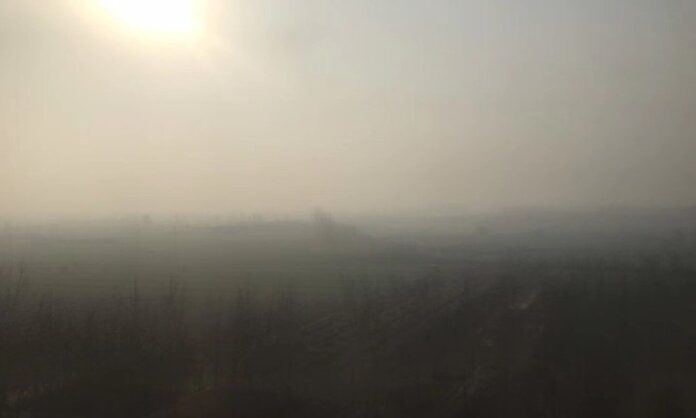Bengaluru: Greenpeace India’s latest study on air pollution, ‘Spare the Air’, reveals that Bengaluru and other ten cities of the country are under the grip of alarming levels of air pollution. The report was released on the basis of a year-long study of the data collected from various authentic sources from September 2021 to September 2022.
The study by Greenpeace India stated that pollution levels were dangerously and persistently higher than the latest World Health Organization‘s (WHO) guidelines.
Also Read: Fighting air pollution: Dhanbad Municipal body puts up faux lung
“Bengaluru was found to have an annual average PM2.5 concentration of 29.01 μg/m3, which is 5.8 times higher than the safe levels (5 µg/m3) set by the WHO. Such alarming levels of PM2.5 concentration were recorded all through the year. Similarly, the city’s annual average PM10 concentration was found to be 55.14 μg/m3, 3.7 times higher than the safe levels(15 μg/m3). The city’s annual NO2 concentration was also found to be 17.86 μg/m3, which is 1.8 times higher than the safe levels(10 μg/m3). The city recorded such alarming levels of NO2 concentration on 342 days or 93.7% of all days on record,” the study said.
To amplify these alarming statistics, Greenpeace India’s volunteers displayed a banner that read “Spare Our Air” at Kempegowda Circle. “The report serves as a wake-up call, once again highlighting the harsh reality that the people of Bengaluru are breathing dangerously polluted air. Vehicular emissions are one of the major contributors to urban PM2.5 and NO2 concentrations. The newly formed government must address this crisis with utmost urgency,” said Avinash Chanchal, campaign manager, Greenpeace India.
Also Read: Delhi’s AQI sees sudden dip, officials say improvement likely soon
The organisation also included a list of recommendations in the report to tackle the city’s growing air pollution, emphasising that the solution is inclusive, accessible, and dependable public transportation.
“The public bus service must become the natural and primary choice of mobility for individuals, which necessitates concrete steps such as doubling the BMTC fleet size, resuming all routes that were suspended during the pandemic, and implementing all 11 bus lanes as soon as possible. The bus is the solution to Bengaluru’s transportation and air pollution woes,” said Greenpeace Campaigner Amruta S Nair.
Also Read: High-level team of officials visits Rajmahal hills to curb air pollution
Shifa, an avid cyclist and volunteer with Greenpeace, said, “As Bengalurans, it is our responsibility to advocate and demand policies for the betterment of our beloved city. We must stop being stoic in the face of such distressing statistics, it is high time that we take charge of our environment and hold accountable those responsible for it.”
In 2021, with increasing evidence of air pollution affecting citizen’s health, WHO conducted a systematic review adjusting all the Air Quality Guidelines levels downwards, warning that exceeding the new air quality guideline levels is associated with significant risks to health.
Also Read: Clamour to save trees from Bengaluru’s PRR project grows louder
Studies have revealed that exposure to severe air pollution increases the likelihood of premature death and many medical conditions, including asthma, preterm birth, low birth weight, depression, schizophrenia, diabetes, stroke, and lung cancer.
The report focuses on the three key contaminants, namely, PM2.5, PM10, and NO2, in cities like Bhopal, Chennai, Cochin, Hyderabad, Jaipur, Kolkata, Lucknow, Mumbai, Patna, and Pune apart from Bengaluru. “With the exception of NO2 levels in Bhopal, all the cities have alarming to dangerously hazardous levels of all three pollutants for a majority of the year, with the annual average and 24-hour peaks frequently exceeding the latest WHO guidelines,” the report says.




